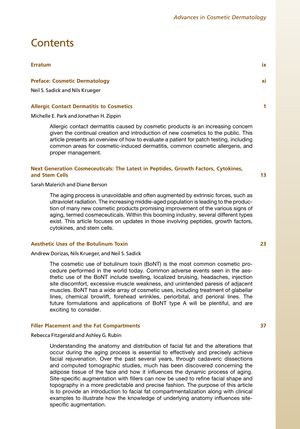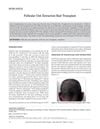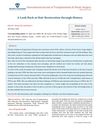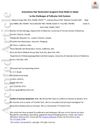Contents
November 2013
in “
Dermatologic Clinics
”

TLDR The document summarizes the latest trends and advancements in cosmetic dermatology.
The document provided an overview of various topics in cosmetic dermatology. It covered allergic contact dermatitis from cosmetics, advancements in cosmeceuticals involving peptides, growth factors, cytokines, and stem cells, and the aesthetic uses of botulinum toxin. It also discussed filler placement in facial fat compartments, modern treatments for cellulite, future directions in cutaneous laser surgery, ultrasound skin tightening, and radiofrequency treatments for noninvasive rejuvenation. Additionally, it addressed new tattoo removal techniques and the latest innovation in hair restoration surgery using robotic systems for follicular unit extraction. Each section highlighted the latest research, techniques, and future trends in their respective areas.




